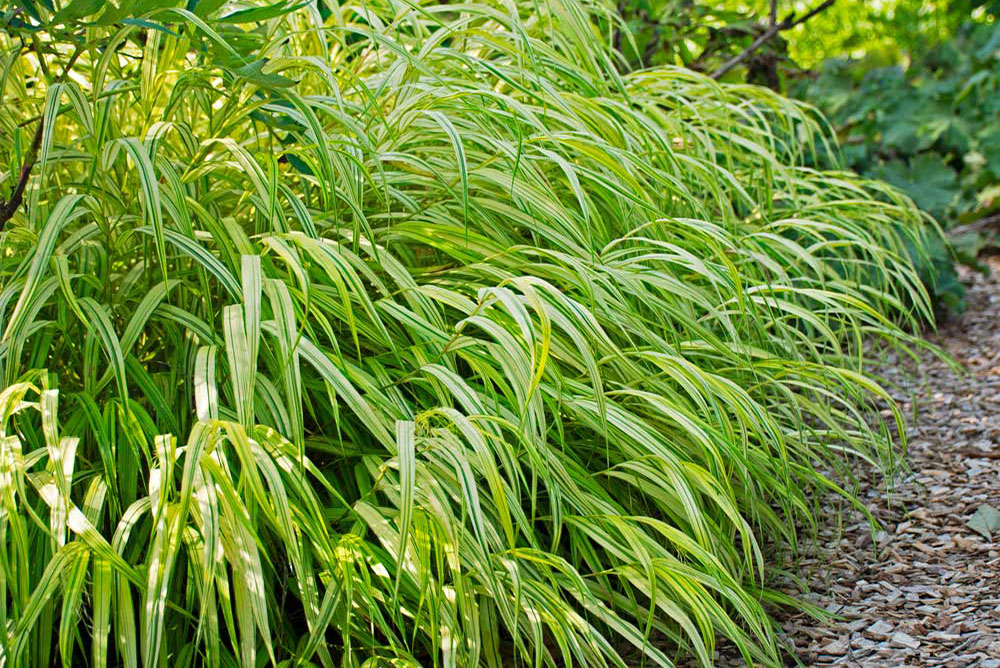
Japanese Forest, or Hakone, Grass, from White Flower Farm.
By Stephanie Cavanaugh
WHEN I STARTED writing for My Little Bird, 402 columns ago, I was strong on garden aesthetics and wobbly on the how-to. I now boldly say, I have an answer or two—or at least I know how to look things up for you. The following is a little bit of this and a little bit of that.
For instance:
I have a few clumps of Japanese Forest Grass, Hakonechloa macra, and they’re growing like crazy. When do they need to be divided and how exactly do you do that without killing the whole plant? Also, when are you supposed to cut back hellebores?
First. Allow me to congratulate you on having any plant grow like crazy that you like well enough to divide, presumably to make more of them. Also known as propagation.
Don’t do anything to your grasses yet. Just let them be, fronds and such frisking through the winter. Dig up the entire plant in the spring, just as new foliage emerges. Depending on how big and tough the root ball is, cut it or chop it or machete it in half, making sure each piece has some roots attached. Plant them.
If it’s a really big ball, you may well get more than two plants from it.
I already knew this!
However, I confess I’d never heard of Japanese Forest Grass, also known as Hakone Grass, though it does sound the sort of thing I should be familiar with, given that my garden has no direct sun to speak of.
The University of Wisconsin Horticulture Extension says: “There are few grasses that perform well in the shade that also have ornamental value.”
This one can reach two feet high and three feet wide, and has slender, strappy lime-green leaves that turn reddish-orange in fall. Unfortunately, and unlike most other grasses, it goes flumpsht in winter, turning brown and dying back completely.
To propagate: Just as with any grass, watch for new growth in spring, dig up the root ball, cut it up and replant the cuttings.
Japanese Forest Grass, the U of Wis horticulturists say, “is a wonderful accent alongside water gardens, dry stream beds, near a path, or at the base of a tree or post, or amid larger rocks in a rock garden. Try it on the top of a wall or terrace where it can cascade over the edge. It is an excellent addition to an Asian-style garden or can be used to provide a somewhat tropical look and feel.”
As for those hellebores, I’ll leave it to Mike the Gardener, who is British (so naturally a know-it-all) and kind of cute, though I wonder what’s under his cap. Mike cuts them back now, not in spring, which is the usual advice. Watch him here.
Have a gardening question? Ask away.

Janet — that’s what the guy in the cap said to do – and who are we to argue with the Brits?
Not I!
Here in the DC suburbs (z7b) my hellebores are pushing new leaves, but the old ones have not died back yet. I prune the old leaves in early spring, before the flower buds open.
Here in Pittsburgh, too. But I trimmed some of the old leaves back. Was that not okay, Steph?